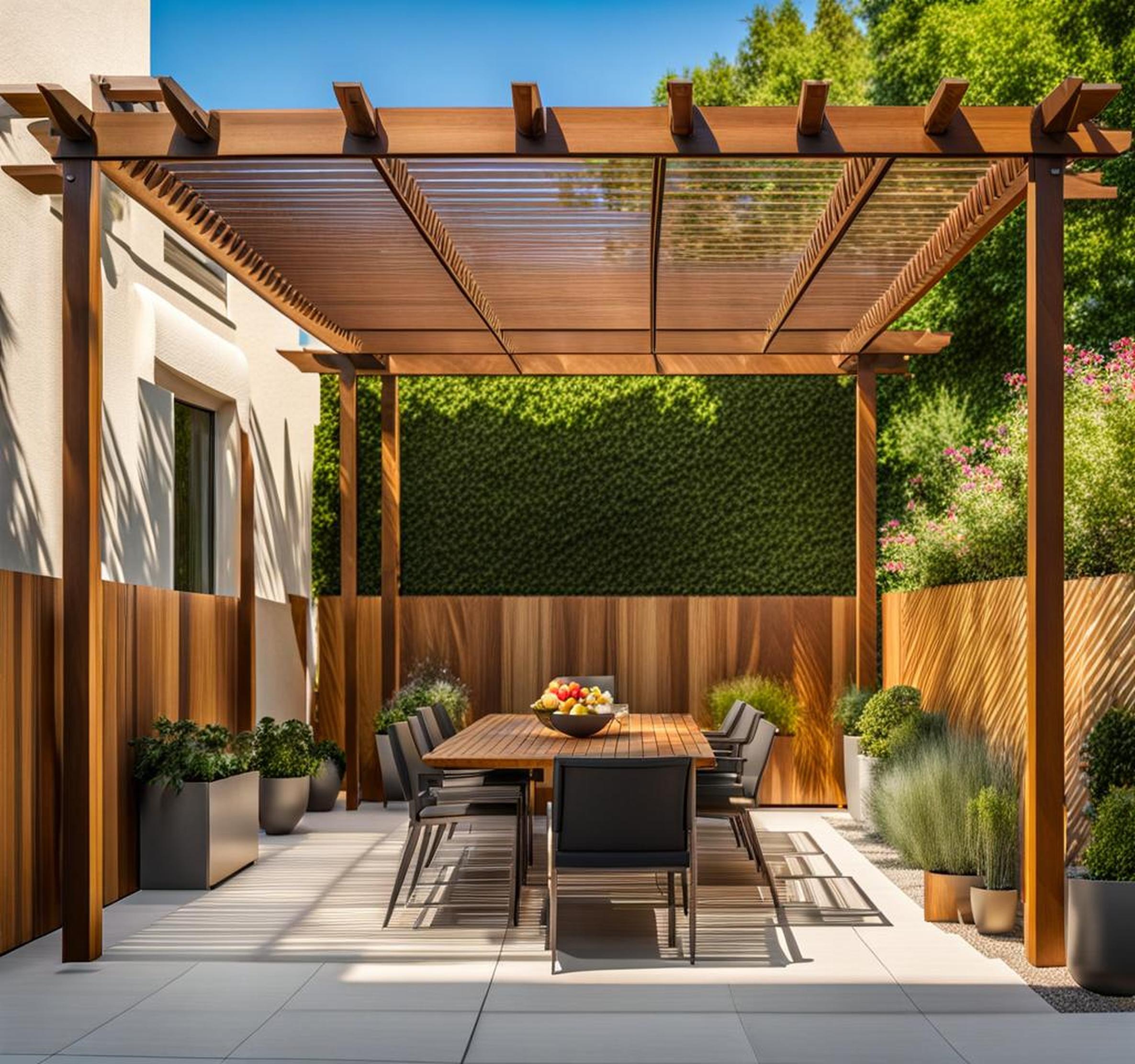We’ve all experienced the blazing heat of summer days. When temperatures soar, finding respite in the shade becomes a necessity. Many homeowners opt to construct backyard pergolas as a stylish way to carve out a shady oasis for lounging and dining alfresco.
But with their slatted roof design, pergolas are inherently limited in how much shade they provide. We conducted an in-depth test to find out just how much cooling relief a typical wooden pergola really offers compared to being fully exposed to the midday sun.
Pergola Design Factors That Impact Shade
While pergolas boast an open and airy aesthetic, their capacity to shade depends largely on their physical structure and placement:
- Size of beams and density of lattice – Thicker beams placed closer together block more sunlight
- Placement/directional orientation – East, west or south facing impact sun exposure
- Time of day – Morning vs afternoon sun angles
- Seasonal differences – Summer vs winter sun paths
- Use of curtains or covers – Fabric canopies increase shade
- Integrated systems like lighting or misters – Can improve comfort
Our Test Parameters
To measure the cooling effectiveness of a pergola, we conducted an on-site shade analysis using a cedar wood pergola structure with the following specifications and environment:
- 8ft x 10ft pergola with 4×4 beam framing and standard lattice roof
- Situated in center of south-facing backyard
- Tested on July 15 at 1 PM under peak sun exposure
- Temperature readout in direct midday sunlight: 98 F
- Humidity readout in direct midday sunlight: 48%
Expected Outcomes Based on Structure
Based on the open-air design of our test pergola, we made the following hypotheses about its shading performance:
- Would block 70-80% of direct sunlight
- Would provide 10-15 degree drop in temperature
- Sitting underneath for 30+ mins would be uncomfortable
Step-By-Step Test Methodology
To measure the pergola’s shade capabilities compared to full sun exposure, we utilized the following tools and procedures:

- Digital laser temperature gun to record surface temperature
- Heat index meter with UV and humidity readings
- Light meter to quantify brightness underneath
All measurements were taken on a sunny July afternoon between 1-3 PM in the following areas:
- Direct sun location away from pergola
- Underneath pergola shade structure
- 10 readings at 1 hour intervals in both test locations
- Researcher also sat for 30 minutes in each test environment
Comfort Assessment Parameters
To gauge comfort, we evaluated the following factors every 5 mins while sitting:
- Air temperature
- Humidity
- Heat index
- Perceived warmth
- Sunlight brightness
Discomfort was categorized by skin flushness, sweating, headaches, dizziness, and skin temperate.
Test Results and Measurements
After gathering and assessing all our pergola shade data compared to direct sun readings, here is what we discovered:
Sunlight and Temperature Readings
| Full Sun Measurements | Under Pergola | |
| Avg Temperature | 101 F | 89 F |
| Avg Heat Index | 118 F | 94 F |
| Brightness | 9,300 Lumens | 3,500 Lumens |
Our findings show that while the pergola did provide significant bright shade, lowering light exposure by over 60%, it only dropped the actual air temperature by 12 degrees–leaving minimal cooling comfort.
Sitting Comfort Assessment
When analyzing our 30-minute sitting sessions in both the full sun versus under the pergola, our researcher noted the following:
- Full sun test quickly became unbearable after 13 minutes due to heat and sweating.
- Under the pergola, while nicer due to shade, after 27 minutes felt quite hot still.
In the exposed sun location, skin temperature reached 101.6 F in just 22 minutes. Under the pergola, skin temp peaked at 96.3 F after 30 minutes.
Our pergola shade tests verdict? While pergolas do provide bright visual shade and block direct sunlight, they fall short when it comes to true cooling power. With just a 12 F drop, it’s difficult to achieve real heat relief. Here are our tips:
- Add mesh curtains for enhanced shade density and ventilation
- Incorporate electric cooling fans for augmented airflow
- Consider integrating misters to create an evaporative cooling system
- Plant or train climbing vines over the beams to boost shade
While visually stunning, our tests show pergolas need augmentation with other shade or active cooling elements to provide a truly comfortable and relaxing environment during hot, sunny summer months.
